Every week -- often with your help -- Food52's Executive Editor Kristen Miglore is unearthing recipes that are nothing short of genius.
Today: The best-yet recreation of a traditional Roman recipe with American ingredients -- and why crushed ice belongs in your salad.
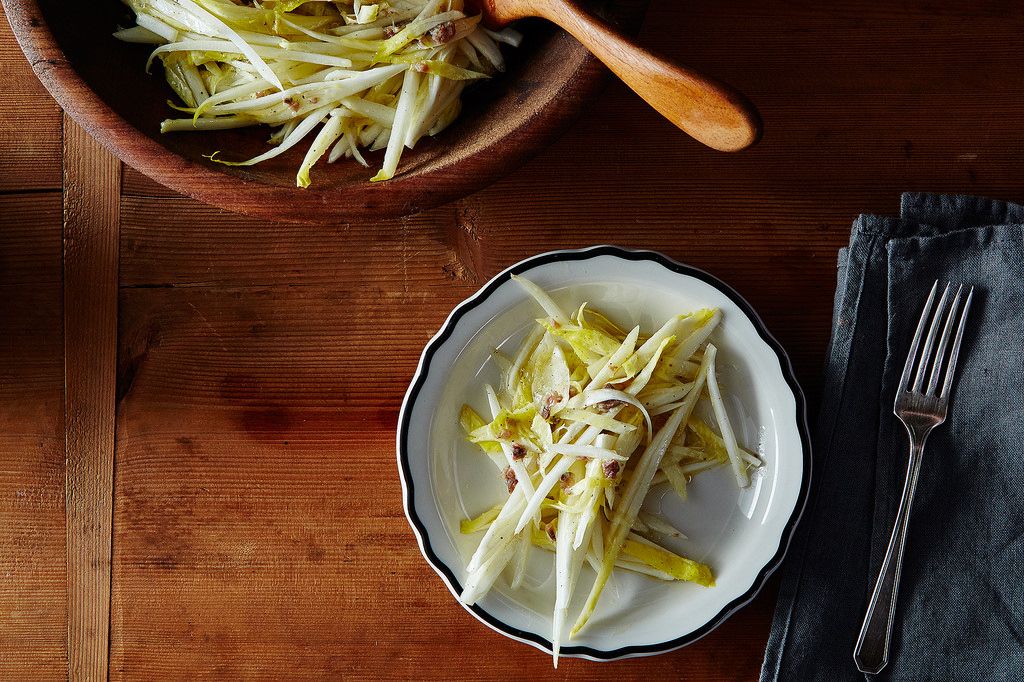
If you were to order this salad at Prune, you'd get a scrappy heap of rough-cut slaw, curling at the tips a little like bean sprouts (don't worry, it's not bean sprouts). It would have a second pile of chopped anchovy on top: a chin-out dare, a poke in the center of your chest. Can you handle this? the anchovies say. And there will probably be a couple visible chunks of ice. All of this is deliberate.
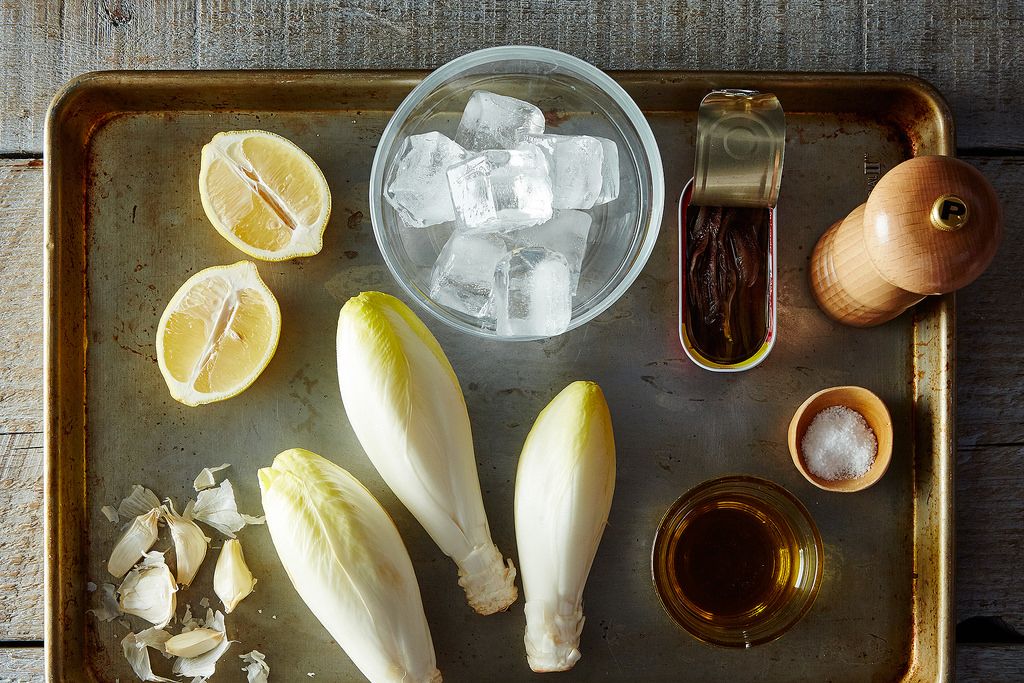
Lest you think someone's drink tipped into the mise, your server will tell you that the ice is meant to be there. "Some customers will be weird about the ice if a few slivers remain in the tangle, as if you made a mistake," Prune chef-owner and author Gabrielle Hamilton writes to her cooks and, via the Prune cookbook, to us. "Remind the servers to remind the customer that the shaved ice is intentional." This last part is highlighted in pink.
More: Get yourself a signed copy of Prune in Provisions.
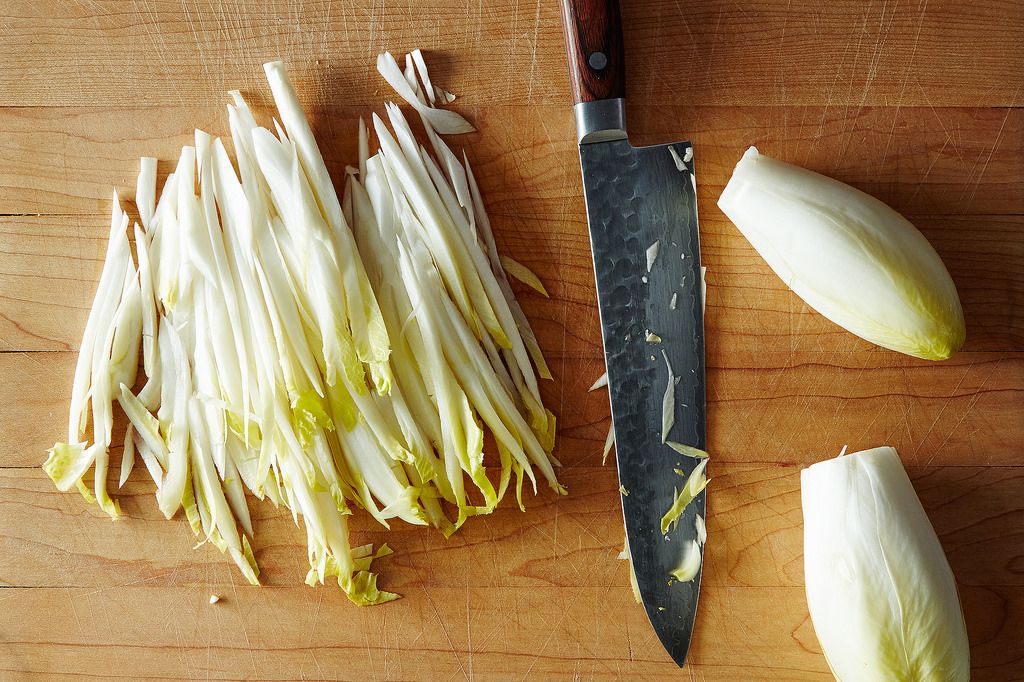

Your server will explain that the melting ice cubes are essential for watering down the very intense dressing, which is alight with grated sticky-fresh garlic, chopped anchovy, and lemon. The ice will also keep the endive curled up and crisp, the dressing focused and sharp. At room temp, it could verge on funky, but icy-cold, it's a bracing, invigorating slap in the mouth. Without crunching down on the ice itself -- you probably shouldn't aim for that -- one bite in, you understand why it's there.
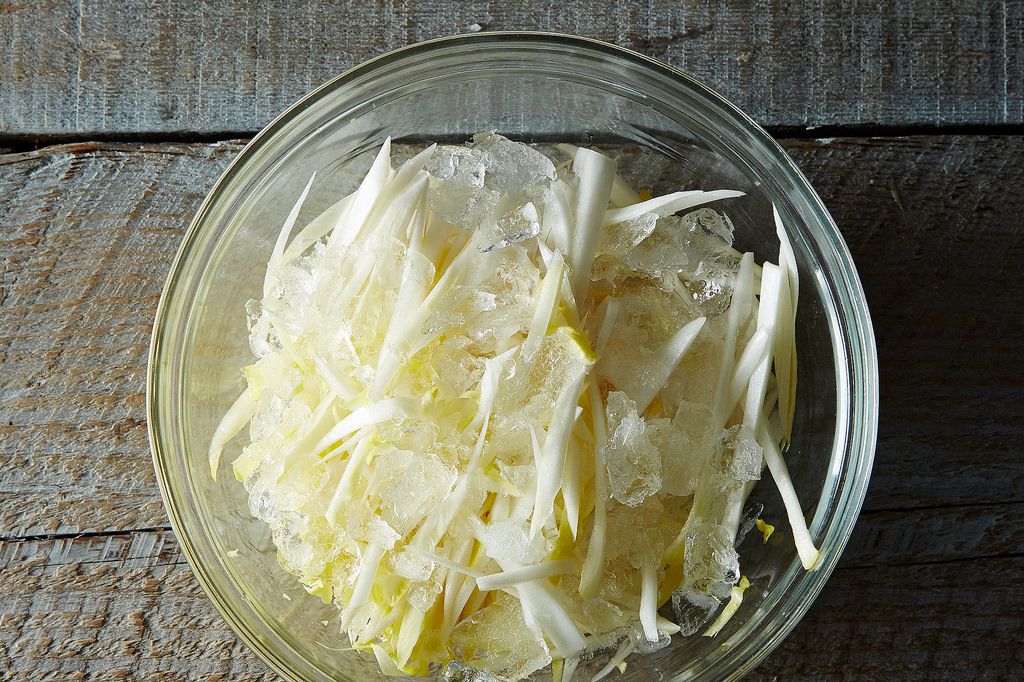
At home, it comes together quickly: Slice Belgian endive into long, thin strips, then dump a cup of crushed ice over them. (If your ice machine isn't self-crushing, just wrap ice cubes in a tea towel and bash them with something heavy.) Before it melts completely, an entire can of anchovies gets chopped, half a lemon gets juiced, and 4 or -- heaven help us -- 5 garlic cloves get grated into a bowl. The now-thoroughly-chilled endive and all its accrued ice and cold water get dumped in last, and it's time to toss and serve.

It's a loud, almost clamorous, very, very good salad. Each bite is fire, crunch, cool. This, Hamilton says, is the closest she's come to recreating a Roman-style puntarelle salad, which is revolutionary, since puntarelle is still hard to find most everywhere in the U.S. and, even when you do, it's awfully finicky to prep. "Finally figured out to give up on American dandelion as a substitute," she tells her cooks, and us, so we don't bother.
When I asked Hamilton to clarify why Belgian endive is a closer match, her answer was so clear and beautifully articulated, I'm sharing it in full here:
"The Belgian endive is, I really swear, an uncanny stand-in, a closer and better approximation of puntarelle than American dandelion is. It has the same water content. A very similar satiny quality to the leaves and the stalks as the glossy white stems of the Italian puntarelle, which is the majority of the part used in the salad in Rome/Milan/etc. The bitterness is comparable. Even the look -- aesthetically -- is more convincing. When you soak the ribbons of Belgian endive in the ice water they respond in pretty much the same curling up way that the puntarelle does. It also "tames" as easily as puntarelle -- so you can dress it in the exact same way, with just garlic and anchovy and lemon juice and olive oil and a little ice water. The American dandelion can be so so bitter sometimes, often, that in order to tame it you need more fat, more protein -- usually a runny egg or pancetta and some of its rendered fat -- or both. I like those things very much, but there is a certain elegance in taming the beast with one gentle hand rather than two fists."
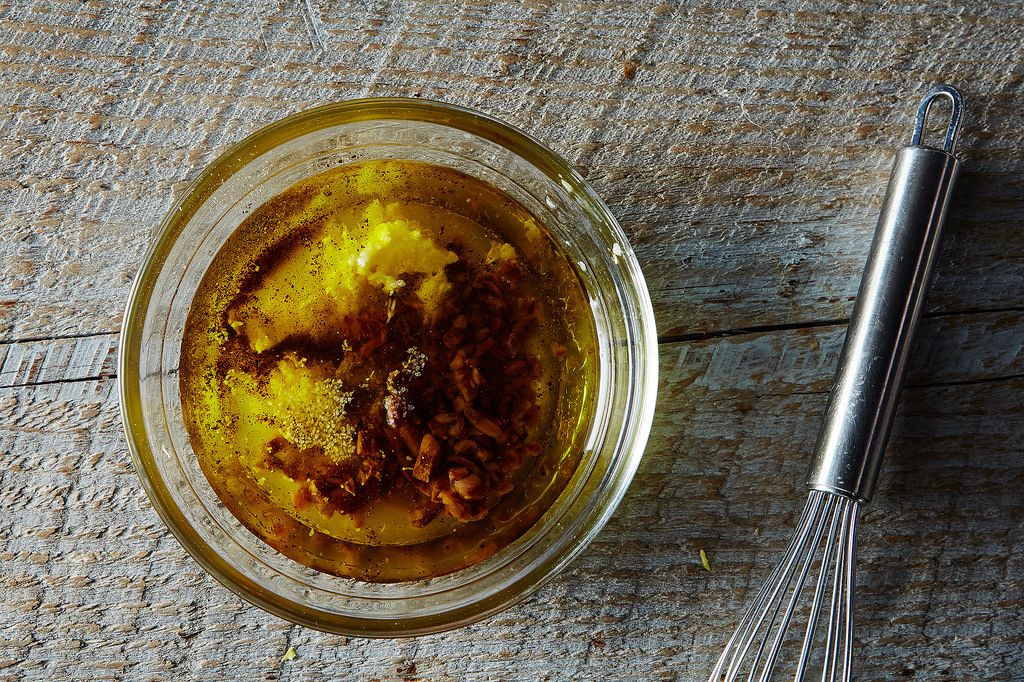
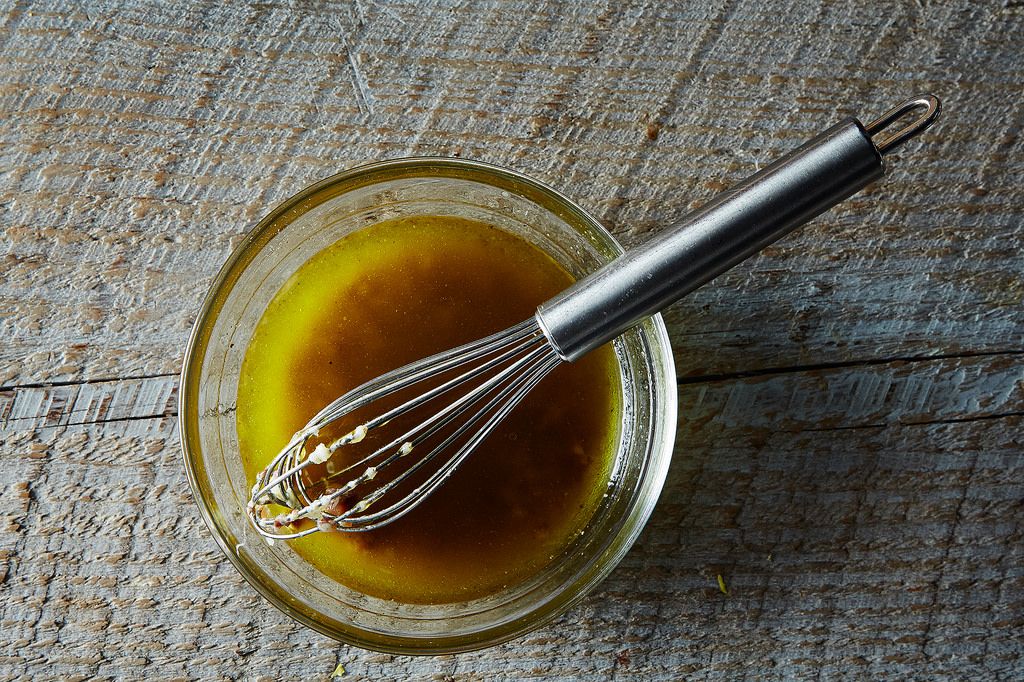
Belgian endive, like puntarelle, is a light but noticeably bitter green, especially since everything we tend to eat with it is meeker: a light vinaigrette, slices of apple, soft cheese. Here, under a lot more fire, bitter may not be the first thing you notice, but it's there -- it gives a stiff girdle to the wildness. A weaker green would disappear.
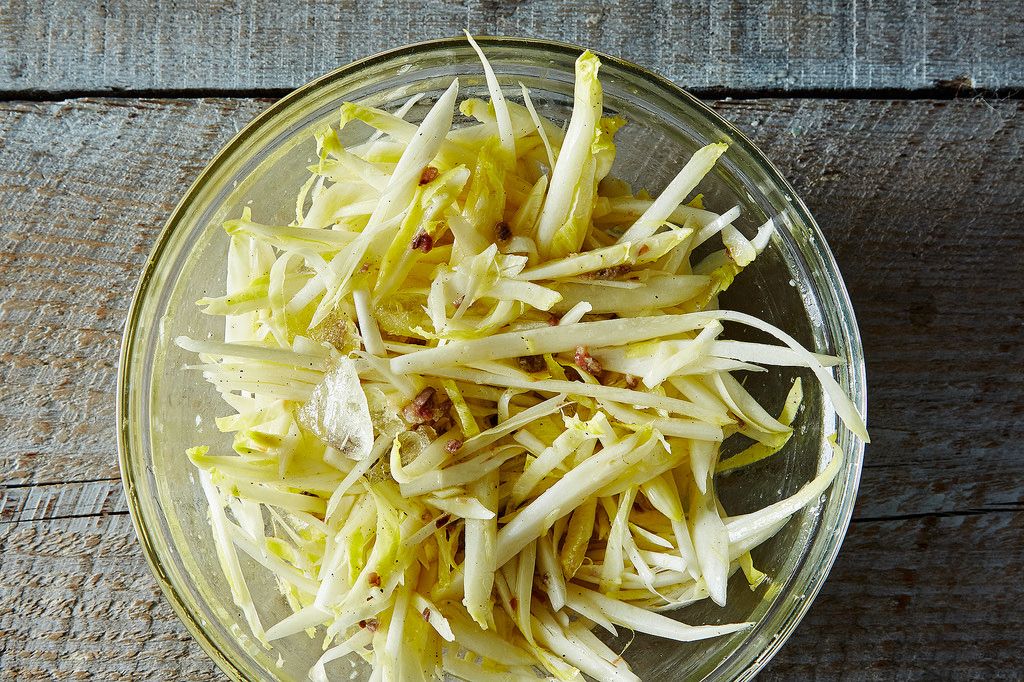
You could serve this with only good bread and butter or cheese, this being a season of simplified meals. Or you could dispense with that and eat it along with something rich, salty, and meaty -- a brothy soup, braised fish, a spaghetti carbonara or stinging cacio e pepe -- like Hamilton herself might.

Gabrielle Hamilton's Endive Salad in the Roman Puntarelle Style
Adapted slightly from Prune (Random House, 2014)
Serves 4
3/4 to 1 pound Belgian endive
4 to 5 cloves burning, sticky fresh garlic, peeled
3 tablespoons fresh lemon juice
10 anchovy fillets in oil
2 serious pinches kosher salt
1/4 cup plus 2 tablespoons extra-virgin olive oil
Freshly ground black pepper
1 cup crushed ice
See the full recipe (and save and print it) here.
Photos by James Ransom











See what other Food52 readers are saying.